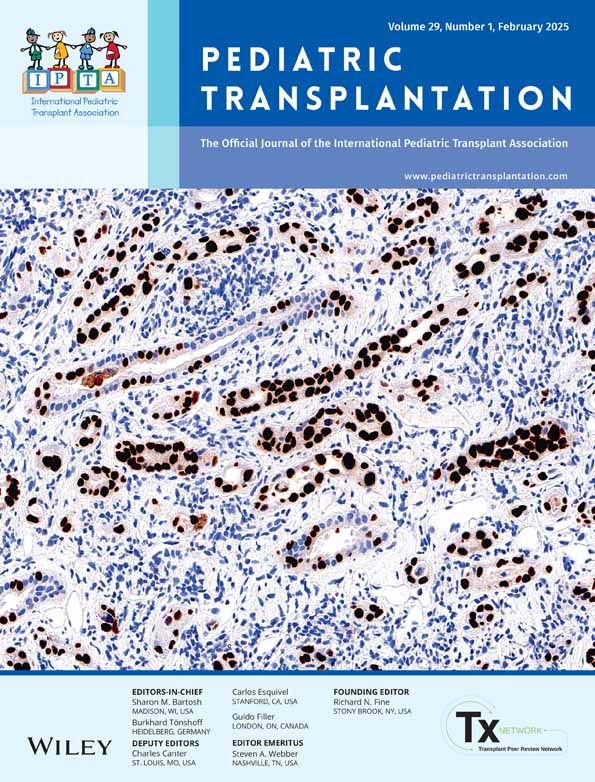Successful Kidney Transplantation for Bilateral Renal Hypoplasia With Ebstein Disease
Funding: This paper was supported by JSPS KAKENHI (Grant Number JP21K08031 [H.N.]).
ABSTRACT
Background
Patients with renal hypoplasia are often associated with congenital heart disease (CHD). During the perioperative period of kidney transplantation (KTx), sufficient circulation volume is required to maintain renal blood flow in the donor kidney. However, little is known about the indication and management of KTx in patients with CHD who require precise hemodynamic assessment during transplantation. We report a pediatric case of successful living-donor KTx for renal hypoplasia with unrepaired Ebstein disease.
Methods
To ensure adequate blood flow to the donor kidney during the perioperative period, the hemodynamic response to rapid administration of saline solution was evaluated in catheterization using the concept of circulatory equilibrium.
Results
The patient received 500 mL/m2 of saline solution in 30 min, resulting in increases in RA pressure from 6 to 10 mmHg and PACW pressure from 10 to 13 mmHg, whereas CI decreased from 5.99 to 5.33 L/min/m2. These findings suggested that the patient was already in a volume overload state and required to shift the output curve upward rather than additional overloading to increase CI. Inotropic agents were used aggressively during the perioperative period of KTx to ensure adequate blood flow to the donor kidney.
Conclusions
Maintaining adequate blood flow to the donor kidney is crucial during the perioperative period of KTx in patients with cardiac issues. Evaluating the response to saline solution administration using the concept of circulatory equilibrium is useful for understanding hemodynamic status and determining how to appropriately increase cardiac output.
Conflicts of Interest
The authors declare no conflicts of interest.
Open Research
Data Availability Statement
The data that support the findings of this study are available from the corresponding author upon reasonable request.




